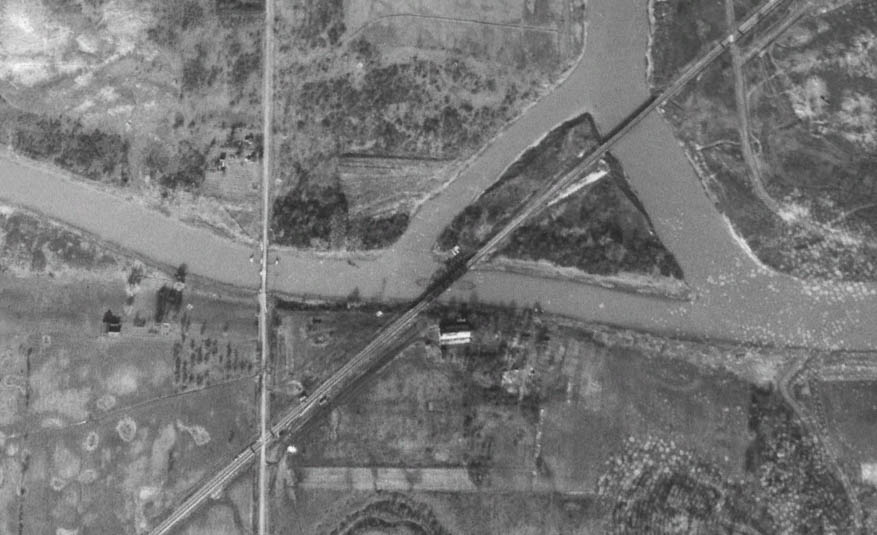David Gilchrist recently went scuba diving at the Welland Scuba Park’s Swing Bridge.
The Montrose Swing Bridge is located on the Welland River, near the confluence with the Queenston Power Canal, in the southeast section of Niagara Falls, Ontario, Canada. It was constructed around 1910 to carry the Canada Southern Railway across the river (click the link to see a discussion of companies who used the Canada Southern tracks over the years). It is a two-track bridge, but only one track is currently in use. It makes a 45-degree turn across the river.
At Port Robinson, Ontario, the Welland River meets the Welland Canal. When the first canal opened in 1829, it terminated at Port Robinson, and all vessels continued down the Welland River to the Niagara River at Chippawa, Ontario. The canal was extended all the way to Lake Erie in 1833, but the Welland River served as a commercial shipping channel for another century. It provided access to the industries along the Niagara River and Buffalo, New York, as well as access to the Erie Canal without crossing open water.
During World War I, the “Welland Canal Force” (or, more colloquially, the “Welland Canal Protection Force”) was formed to protect critical shipping links in Niagara, including this bridge. Images from the Niagara Falls Library’s “Digital Niagara” collection show military forces on this bridge and in other locations around the area.
The Welland River and the Welland Canal have a level difference of about 8 feet, with the canal being higher. This was overcome by constructing a lock at Port Robinson. This lock had a small size. The demand for river navigation decreased as ships grew in size, particularly after the opening of the greatly expanded Fourth Welland Canal in 1932.

The bridge carried the Canadian Pacific Railway (CPR) Hamilton Subdivision to the Michigan Central Railway Bridge, which crossed the Niagara River into the United States until 2001. Several trains passed through the line each day. The Hamilton Subdivision, which ran through the busy tourist area of Niagara Falls, was abandoned late that year, and trains were rerouted over a Canadian National Railway line to enter the United States via the International Railway Bridge. The Montrose Subdivision was renamed after the track that crossed the Montrose Swing Bridge. It now exists solely to serve a couple of industries within the city limits of Niagara Falls, carrying only one or two short trains per week.
Dive Report
35 feet approximate dive depth
Variable visibility
Usually a 60 minute dive is possible
David Gilchrist
Follow David’s Dive Adventures on Facebook






